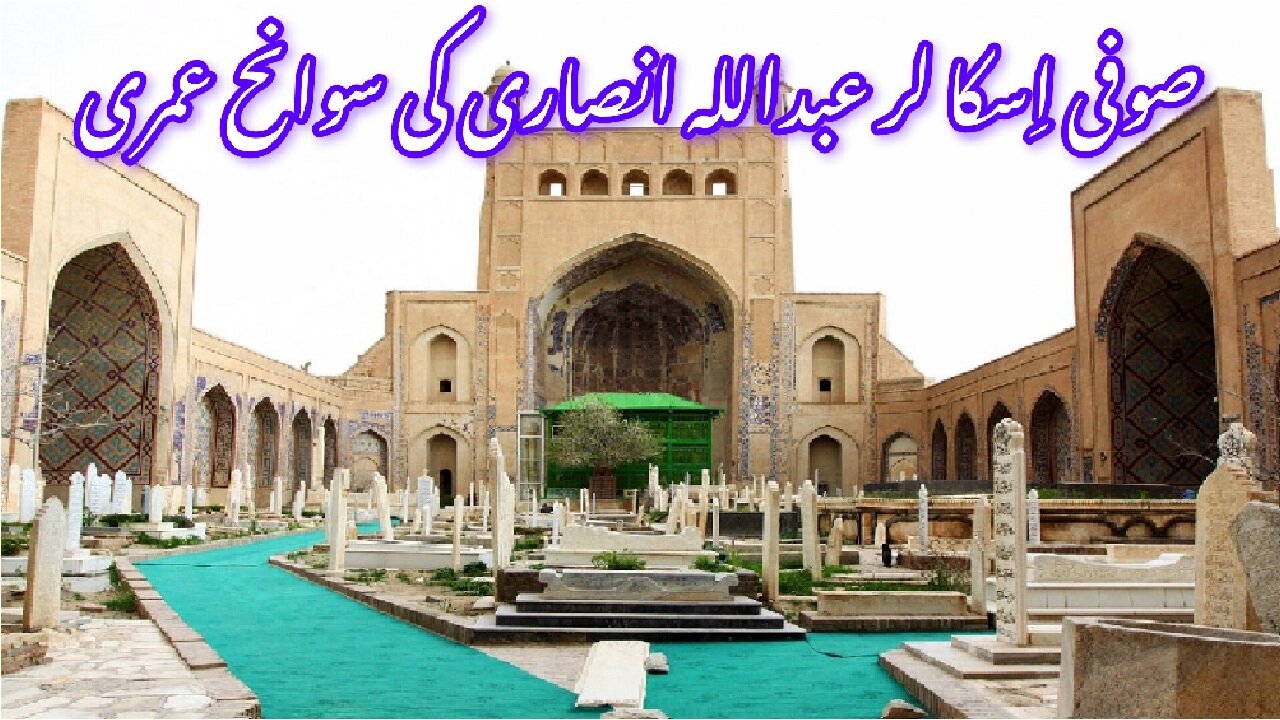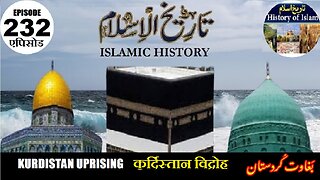Premium Only Content

Biography of Sufi Scholar Abdullah Ansari | صوفی اسکالر عبداللہ انصاری کی سوانح عمری
@islamichistory813 #Sufism #SpiritualJourney #AbdullahAnsari
Biography of Sufi Scholar Abdullah Ansari
Dekhti Aankhooon aur sountay kaanoon ko Asslamoalaikum, sisters, brothers friends and elders, In this islamic informative video, we present the biography of Abdullah Ansari, a revered Sufi scholar known for his deep insights into spirituality and mysticism. Through a detailed examination of his life, we are describing his key writings and the principles that define his teachings. Describing how Abdullah Ansari's wisdom continues to inspire seekers of truth and knowledge today.
Abu Ismaïl Abdullah al-Harawi al-Ansari or Abdullah Ansari of Herat also known as Pir-i Herat "Sage of Herat", was a Sufi saint, who lived in Herat (modern-day Afghanistan). Ansari was a commentator on the Qur'an, scholar of the Hanbali school of thought (madhhab), traditionalist, polemicist and spiritual master, known for his oratory and poetic talents in Arabic and Persian.
Ansari was born in the Kohandez, the old citadel of Herat, in 1006. His father, Abu Mansur, was a shopkeeper who had spent several years of his youth at Balkh.
Ansari was a direct descendant of Abu Ayyub al-Ansari, a companion of the Islamic prophet Muhammad, being the ninth in line from him. The lineage is described, and traced in the family history records, as follows;
Abu Ismail Khajeh Abdollah Ansari, son of Abu Mansoor Balkhi, son of Jaafar, son of Abu Mu'aaz, son of Muhammad, son of Ahmad, son of Jaafar, son of Abu Mansoor al-Taabi'i, son of Abu Ayyub al-Ansari.
In the reign of the third Rashid Caliph, Uthman, Abu Mansoor al-Taabi'i took part in the conquest of Khorasan, and subsequently settled in Herat, his descendant Khwajah Abdullah Ansari died there in Dhu al-hijjah 481/February-March 1089.
Ansari was a disciple of Abu al-Hassan al-Kharaqani.[citation needed] He practised the Hanbali school of Sunni jurisprudence. The Shrine of Khwaja Abd Allah, built during the Timurid dynasty, is a popular pilgrimage site. He excelled in the knowledge of Hadith, history and ?ilm al-ans?b (genealogy). He wrote several books on Islamic mysticism and philosophy, in Persian and Arabic.
Abdullah Ansari had 5 children in total: Khwaja Jabir, Khwaja Abdurrahman, Khwaja Hashim Buzurg, Qazi Mohd Yusuf and Qazi Mohd Naimat.
The descendants of the sons of Abdullah Ansari had migrated to other regions in South Asia, some remained in Herat. Some settlements of the descendants of Abdullah Ansari are in, Jais(Jayas), Gorakhpur, Yusufpur, Mau, Saharanpur, Punjab, Kakori and the scholars at the famous university in Lucknow, Firangi Mahal.
He was one of the first Sufis to write in Persian, which he wrote in a local dialect, thus indicating that he wanted to spread his teachings to the general populace instead of just to the ulama, who knew Arabic.
Ansari's most famous work is "Munajat Namah" (literally 'Litanies or dialogues with God'), which is considered a masterpiece of Persian literature. After his death, many of his sayings recorded in his written works and transmitted by his students were included in the 10-volume Tafsir of Maybudi, "Kashf al-Asrar" (The Unveiling of Secrets). This was among the earliest complete Sufi Tafsir (exegeses) of the Quran and has been published several times.
The Hanbali jurist ibn Qayyim al-Jawziyya wrote a lengthy commentary on a treatise written by Ansari entitled Madarij al-Salikin. He expressed his love and appreciation for Ansari in this commentary with his statement, "Certainly I love the Sheikh, but I love the truth more!". Ibn Qayyim al-Jawziyya refers to Ansari with the honorific title "Sheikh al-Islam" in his work Al-Wabil al-Sayyib min al-Kalim al-Tayyab
So sisters brothers friends and elders, tomorow we will be described Biography of Sufi Scholar Elder Abdullah Shah Ghazi. Allah hafiz
============================================
-
 10:49
10:49
ISLAMIC HISTORY
1 day agoIslamic History Episode 232 Kurdistan uprising कुर्दिस्तान विद्रोह کردستان کی بغاوت
43 -
 1:55:20
1:55:20
The White House
11 hours agoPresident Trump Participates in the Memorial Service for Charlie Kirk
99.2K90 -
 1:02:41
1:02:41
Sarah Westall
10 hours agoDomestic Terror Operation: Death Threats, Smear Campaigns, Gang Stalking w/ Journalist Sarah Fields
52.2K9 -
 1:51:40
1:51:40
Nerdrotic
10 hours ago $17.58 earnedGobekli Tepe Discovery and "Reconstruction" | Forbidden Frontier #118
84.3K10 -
 29:07
29:07
Tactical Advisor
10 hours agoATF Changes Ruling on SBR & Tacpack unboxing | Vault Room Live Stream 039
93.8K18 -
 2:00
2:00
From Zero → Viral with AI
16 hours ago $4.80 earnedAre You Being Left Behind? Why AI Marketing is No Longer Optional
50.7K8 -
 9:10
9:10
BlackDiamondGunsandGear
14 hours agoI Finally Got it! / Rough Country Build Ep.1
34.5K9 -
 9:44
9:44
Millionaire Mentor
3 days agoCharlie Kirk Brings Woke Student To STUTTERING Over White Privilege Lies
36.1K11 -
 24:12
24:12
MudandMunitions
15 hours agoOff-Roading with NYPrepper Wild Elk & PA’s Most Remote Backroads
22.8K1 -
 DVR
DVR
Bannons War Room
7 months agoWarRoom Live
37.4M8.69K